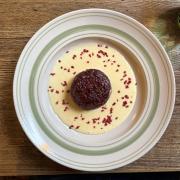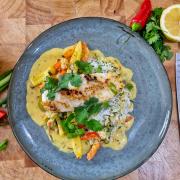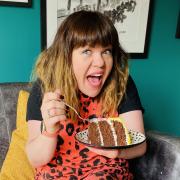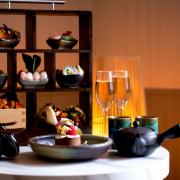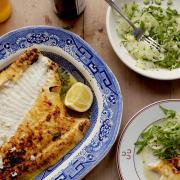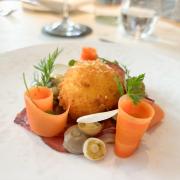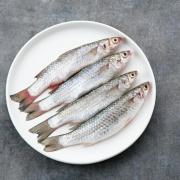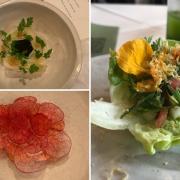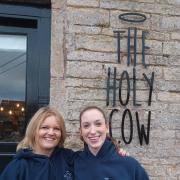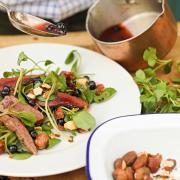Once the mellow flavours of beer, bread and yoghurt were the only fermented foods we were accustomed to; now super sour kimchi, kombucha and kefir are supermarket regulars. But a small set-up in rural Somerset was spearheading the fermentation movement a whole decade before these foods become commonplace

In a wooded, four-acre plot in a tranquil hamlet just outside Wellington you'll find the Tracebridge Fementeria - a whimsical world of fascinating fermentations, wondrous wild foods and backyard baking.
Tracebridge has been the long-term project of Katie and Gordon Venner who moved to their small slice of seclusion in 2008 in search of a self-sufficient rural life with their three sons.
At first content with just a little land to grow some fruit and vegetables and space for Gordon to build a wood-fired masonry oven, before long, outside renovations were prioritised over their derelict and crumbling cottage, and Katie and Gordon were setting up an alfresco bakery built from reclaimed materials cleared from the rugged and overgrown site.
Forging their place in the local community and hosting 'oven-warming' parties from the first summer of living in Tracebridge, Katie and Gordon soon became known locally for their wood-fired sourdough pizzas.

"We were hosting Friday pizza nights alongside cautiously baking small batches of sourdough for the village shop and local markets. This was the start of our fermentation journey," says Katie.
For months Katie buried her head in the few books available at the time. Starting with the basics of sourdough, it wasn't until she started to thumb her way through Nourishing Traditions by Sally Fallon that her world of fermented foods really started to expand.
"I soon came to realise how many fermented foods and drinks there really were - and I couldn't believe that I had never heard of them, let alone tried them. I bought a huge German crock off the internet and made my first sauerkraut. I did everything wrong - didn't add enough salt, didn't cut the cabbage small enough, didn't pound it to get the juices flowing - and after a month I had a huge pot of foul-smelling slime!"
However, with the aid of her raw food chef friend, Deb Durrant, and after attending a course hosted by US fermentation revivalist Sandor Katz, Katie spent the next few years experimenting and eagerly telling her sourdough fans the next big thing after their fermented loaves would be fermented fruit

and veg.
Katie developed a keen interest in the health benefits of fermented foods and drinks.
"It's taken a while to capture people's imagination," she explains. "I think we have a resistance to fizzy, sour foods - we're used to our pickles being sweet and sour, from vinegar and sugar. What's made the difference is the greater understanding of the science of the gut and the role bacteria plays in keeping us healthy. And it's been great to see the research confirm that making your own fermented foods at home is likely to deliver you more healthy bacteria than buying expensive probiotic capsules."
It was a natural progression for Katie to establish hands-on classes and workshops in the areas of fermentation and sourdough. "A good few years ago people were a little reluctant to explore the world of ferments, or those who were keen were extremely inquisitive and in need of guidance, as there were very few books or teachers around. That's all changed now for the positive, and with people keen to bake and ferment for themselves, we refurbished our barn into a small teaching space - we call 'Paradise' - that has become a hub in which like-minded people can meet and exchange knowledge."

Sat in the 'Fermenteria' surrounded by colourful jars of all shapes and sizes, like an edible laboratory, I ask Katie what it is about fermentation that she so loves.
"I still get really excited by the colours of fermented vegetables and drinks - so pure and vivid," she enthuses.
"The pink of spring rhubarb and the bright yellow of a fermented piccalilli. I love to watch and listen to them in the kitchen as they pop and bubble, gently fermenting, and to see them on the plate bringing crunchy, sour colour to a meal. I love how some people, as I did, get so excited when they discover these amazing tastes, that they want to tell everyone about them."
For many, the experimental and tactile nature of fermented foods is half the attraction.

Katie says: "I love the experimentation; I've started putting more medicinal herbs in my ferments and I think there is more to be discovered about the crossovers between fermentation and herbal medicine. We're lucky to live in a relatively quiet and unspoiled part of Somerset and so we have access to wild foods like wild garlic."
Visitors are constantly surprised by the ease of creating tasty ferments; once having grasped the basic principles demonstrated by Katie, most are hooked by the experimental and playful nature of fermentation.
"All I suggest is following the seasons and ferment what appears in the garden or at the market; trying to stick to locally grown, pesticide-free veg is best," says Katie.
Celebrating a simple process that provides surprisingly satisfying results, Tracebridge Fermenteria is a definite foodie destination for those ready to explore the world of fermentation further.
For more information, visit tracebridgesourdough.co.uk.



